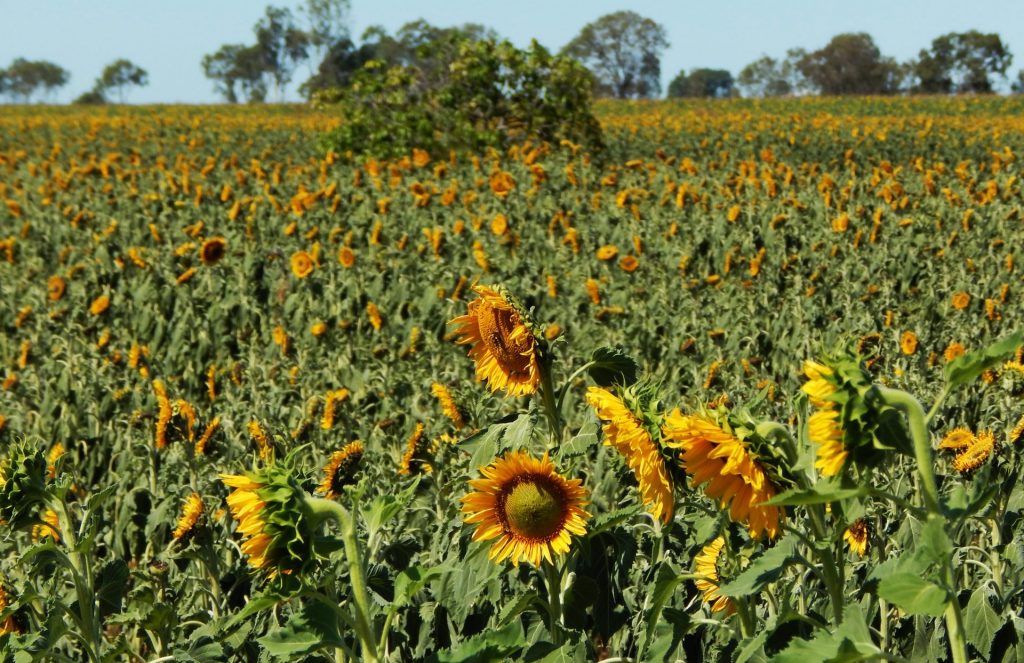
Happy New Year.
Happy New Year Everyone. I hope that the new beekeeping season is good wherever you are. This morning we have mild weather but it’s blowing a gale and branches are strewn all over the road. Dead leaves are flying everywhere. Its long before daylight and I’ve just been down to the airport at 5:30 am. The almost full moon is casting a bright light and reflecting off the puddles of water on the road so it’s quite atmospheric and being outside feels like an adventure.
Ukraine 2013.
When my friends Cynthia, Helen and I visited Ukraine for Apimondia in Kiev 2013 we went out on one of the organised bus trips into the country to visit beekeepers and places of interest. We rolled along through the flat landscapes north of Kiev, and as far as the eye could see were endless fields of sunflowers produced on an industrial scale. It was early October so the fields were brown with dead flowers and we had to imagine the bright colours during the height of flowering a month or so earlier.
At the time we thought that monoculture and pesticides might have been the main problems for the honey bee colonies pollinating this crop. Later we discovered that sunflower (Helianthus annus) pollen is low in protein (around 13% crude protein) and not so good for brood rearing, especially if it is the only source of protein available. I knew that bees collected resin from sunflowers to make propolis so that was at least one positive benefit of this crop for them.
Recent Study Suggests Sunflowers may Reduce Varroa Levels.
There might be more benefits of sunflower pollen than we previously thought. Recently, Dr. Humberto Boncristiani, host of Inside the Hive TV, https://www.insidethehive.tv/ raised an interesting topic during one of his online tutorials on reading research papers. He highlighted a study by Dr. Evan Palmer-Young and colleagues suggesting that sunflower pollen, and probably other asteraceae family plant pollens, can reduce varroa levels in honey bee colonies. https://www.researchgate.net/publication/353744939_Mites_alight_Sunflower_crop_area_and_pollen_supplementation_enhance_honey_bee_resistance_to_Varroa_destructor
The Paper & Peer Review.
This paper was expected to be published at the end of December 2022 following peer review. The paper above is called a preprint which means that it has not yet been approved and therefore cannot be quoted by the press. Preprints speed things up for scientific authors who might spend 3 years or more on research and writing up the paper. The finished paper then goes to at least 3 scientists for peer review which might take a year so the process is a long one. A preprint helps scientists get their work out there to be noticed when there is now such great pressure on them to get published and apply for more grant funding.
Some Pollens Reduce Parasites.
We know that many plants have flowers that produce nectar and pollen which help animals resist parasites, and asteraceae plants are known to reduce parasite infections in various species of bee. Plants contain many substances including chemicals, volatile oils and toxins and have been used in human medicine since plants and mankind appeared on the planet.
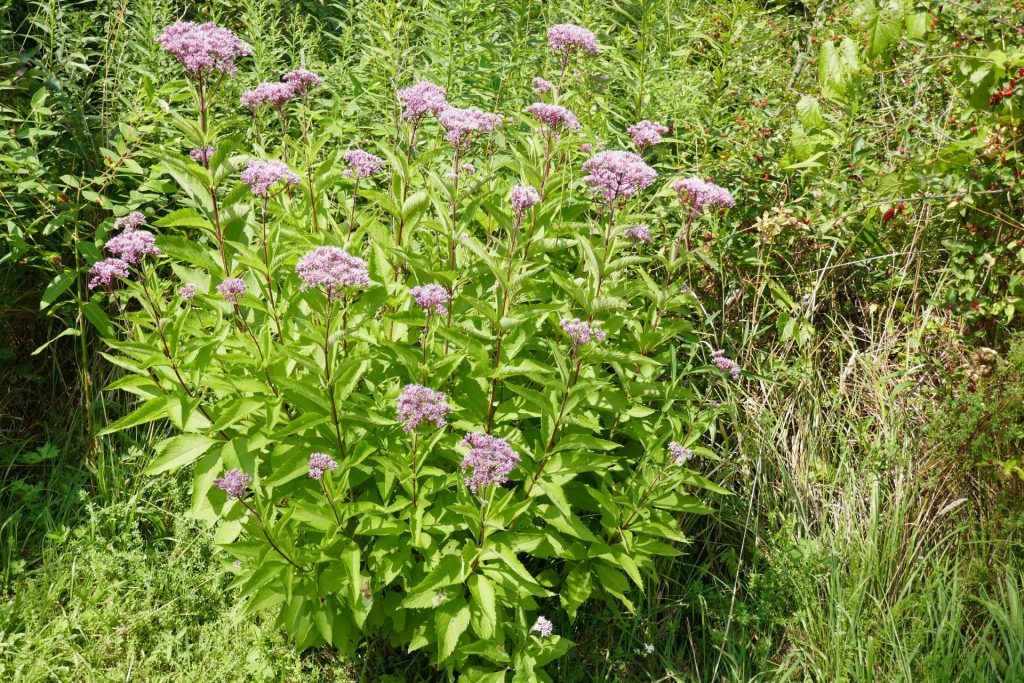
Monarch butterflies, for example, lay their eggs on milkweed which the larvae feed on and they build up secondary metabolites that can increase resistance to parasites and predators. Milkweed, Asclepia spp. is from the Apocynaceae family and there are over two hundred different subspecies. It is called milkweed due to the milky white latex produced by the plant and it contains cardenolides. These are cardiac glycosides which are toxic to humans, but when monarch butterfly larvae feed on them they become less attractive to predators and so some protection is conferred on them by this plant.
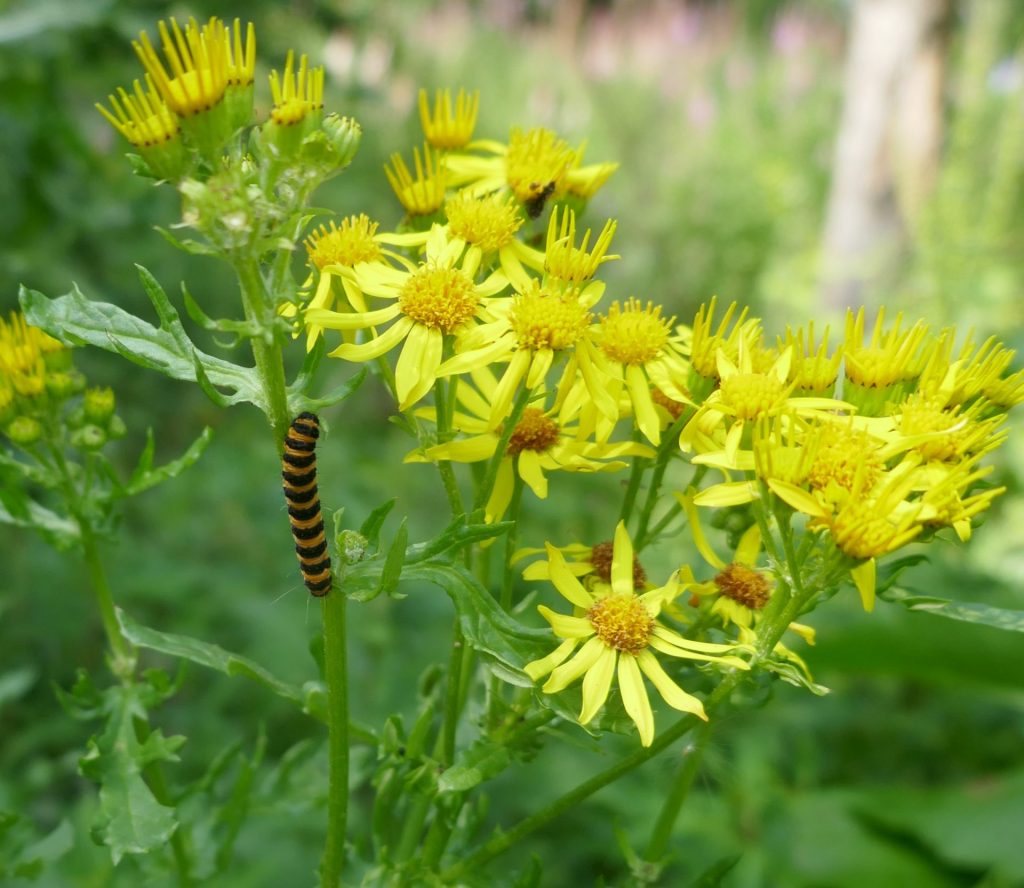
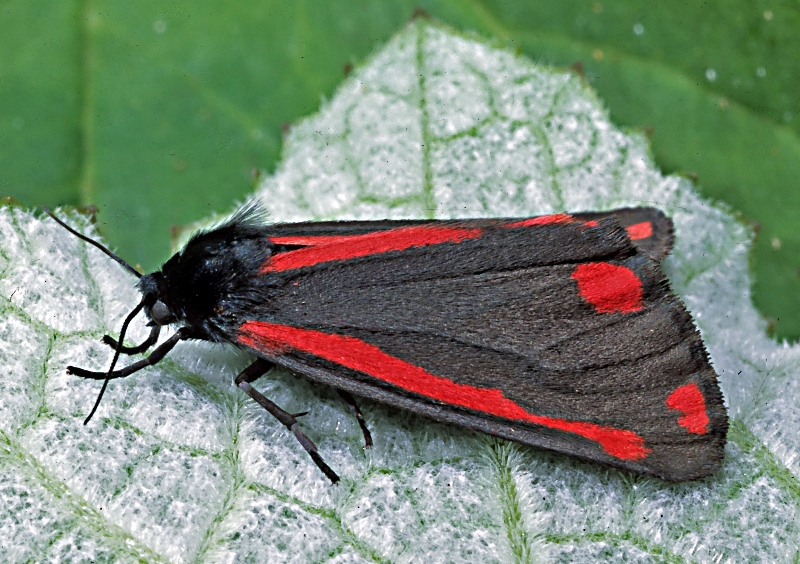
The cinnabar moth, Tyria jacobaeae, lays its eggs on the ragwort plant, Jabobaea vulgaris, and is common here in the UK, apart from in the North of Scotland. Ragwort is renowned for its toxicity as it contains pyrrolizidine alkaloids (PAs) which undergo metabolic toxication processes in the liver which is the main target organ that may be damaged. It is also known to be carcinogenic. A study in Germany 1 was conducted to investigate the levels of PAs in ragwort honey which is collected by honey bees in agricultural areas where ragwort growth is uncontrolled. Samples of honey were analysed to estimate the levels of PAs that might be consumed by humans. Ragwort is harmful to cattle and horses when they are fed hay containing dried ragwort. It seems very likely that the cinnabar larvae are protected from predation by metabolites, from PAs, stored in their tissues, as well as being protected by their colourful appearances (aposematism).
Protection for Osmia and Bumble Bees.
Previous research shows that pollen from asteraceae plants is linked to resistance to brood parasites in the Osmia species in the Megachilidae family of bees which include mason and leaf cutter bees. Sunflower and goldenrod Solidago spp. provides the bumble bee, Bombus impatiens, with some resistance to a trypanosomatid parasite called Crithidia bombi. Another study found that when honey bees consumed sunflower pollen and honey the gut parasite microsporidian Nosema ceranae levels were reduced, but the Palmer-Young study doesn’t support those results.
Field and Lab Tests.
The Palmer-Young study involved both field and lab research and their main finding was that each doubling of a sunflower (Helianthus annus) crop area was associated with a 28% reduction of varroa mite infestation. Their findings suggest that sunflower crops, or pollen supplements, negatively affect varroa but they were unable to discover the mechanisms and exactly how this happened.
The authors explain that asteraceae pollen contains unusual sterols and there is one that is toxic to some herbivores but they must find out what exactly is going on with honey bees before the results of this research can be used to make new varroa treatments. They speculate that honey bees might store toxic compounds in their tissues but they need to further explore the physiological and behavioural effects of sunflower on honey bees to help identify specific compounds that will interfere with varroa mites without damaging bees. Varroa might be affected by the toxicity of the brood food, pupae, or the adult bee. They may be sensitive to secondary metabolites in sunflower pollen and nectar, and metabolites stored in adult bee or larval fat body tissue. We need to know how the honey bee adult and larvae are affected before we consider treating colonies with sunflower pollen patties etc.
Will Other Asteraceae Plants be Effective?
We also need to know if pollens from other asteraceae family plants will have the same effect as sunflower. We have many other asteraceae family plants growing wild in the UK including dandelion, hawkweed and ragwort. Sunflower is not grown on a large scale all over the world and certainly not in the UK. Apparently there has been a reduction of sunflower crops in the US in recent years. Interestingly in countries such as India where sunflower crops are grown and are near honey bee colonies, varroa levels were lower towards the end of summer which coincided with crop flowering and when varroa levels were naturally higher at the end of the season. The paper quotes a study from India.
More Research.
This is an exciting piece of new work and we can look forward to learning more when the scientists complete the next stage of this piece of research. Perhaps sunflower pollen and nectar will become an important medicine for honey bees rather than a nutritional benefit to them.
Reference.
1 Spread of Jacobaea vulgaris and Occurrence of Pyrrolizidine Alkaloids in Regionally Produced Honeys from Northern Germany: Inter- and Intra-Site Variations and Risk Assessment for Special Consumer Groups
Christoph Gottschalk 1, Florian Kaltner 1,2, Matthias Zimmermann 1, Rainer Korten 3, Oliver Morris 3, Karin Schwaiger 1 and Manfred Gareis 1 1 Chair of Food Safety, Faculty of Veterinary Medicine, Ludwig-Maximilian-University Munich, Schoenleutnerstr. 8, 85764 Oberschleissheim, Germany 2 Chair of Analytical Food Chemistry, Technical University of Munich, Maximus-von-Imhof-Forum 2, 85354 Freising, Germany 3 Interessengemeinschaft Jakobskreuzkraut, Zarnekauer Siedlung 2, 23701 Zarnekau, Germany

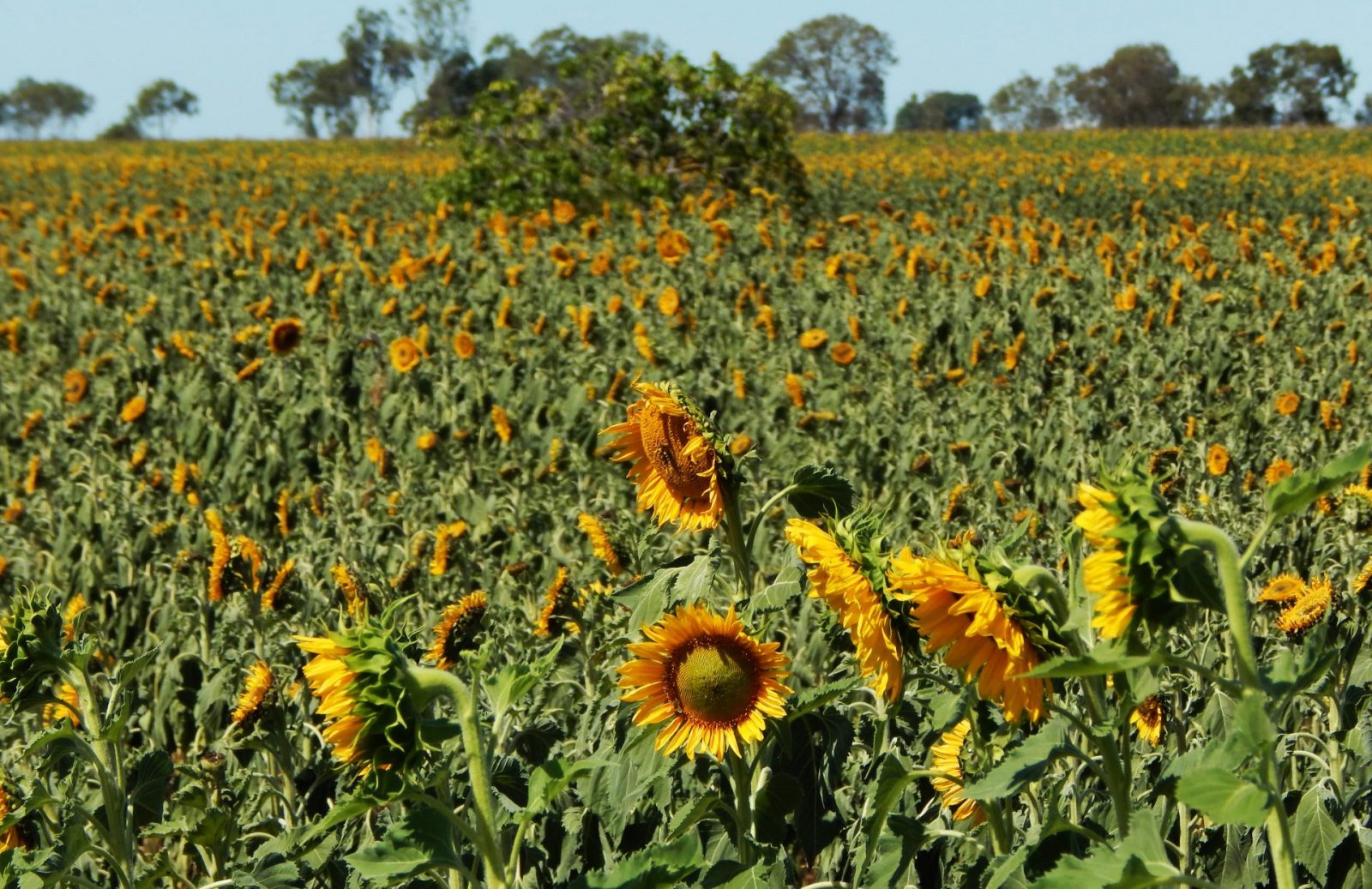
Hello Ann. Thanks for this. Although it’s not the main point of your post, you mentioned a study in Germany on levels of PA in ragwort honey, which ‘estimated the levels that might be consumed by humans.’
What did they find? Do humans consume significant amounts of PA in honey, and does it matter?
Hello Archie. The article is a complicated read and there are probably other more helpful studies. However, they studied colonies in areas of Germany where ragwort was rampant and they found remarkable differences in the levels of PAs collected by colonies in the same apiaries. The problem seems to be that when the honey is not blended with another honey from a different plant source, and so it is almost a mono-floral ragwort honey, levels are higher. Children taking an average amount of unblended honey on their toast may be exposed to high levels of PAs and PANOs (another metabolite called PA N-oxides). People who eat a lot of this honey are at risk. A couple of years ago European legislation was brought in to state acceptable levels of PAs in foodstuffs because there are lots of plant-based food like herbal teas that contain them. Meat can contain them too. I think that it does matter because PAs build up in our bodies to have an accumulative effect. If we have honey from crops that produce PAs then I guess we need to be aware of the risks and be cautious. I think it is worrying that the levels were very high in the honey from some colonies in this study, and if this honey was mixed with another honey it might still give high levels. It might be worth doing your own investigations into this subject, and I’m sure we will hear more about it in the future.
Thank you, Ann, for bringing the results of this preprint to our attention, and to discussing the meaning (tentative) of the findings. As someone who focuses on the scientific papers on the behavior of honey bees, I find the wide range of your blog articles very helpful.
Hello Tom. Thank you for taking the time to comment and I am pleased that you find the articles of use.Ann.